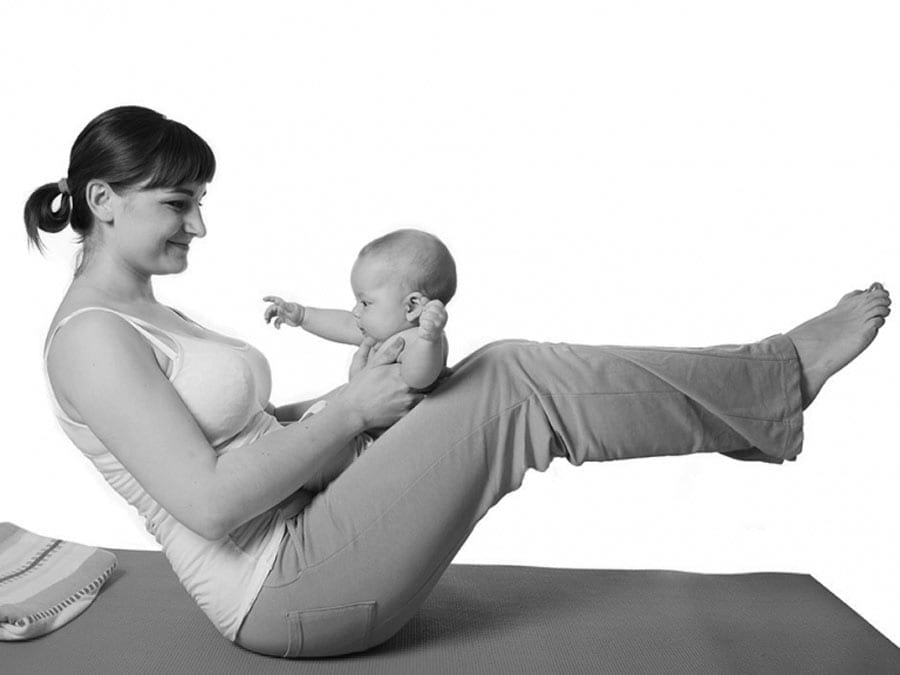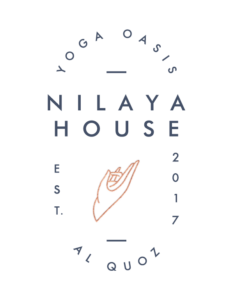Practising post-natal yoga has many benefits for new mums and also for their babies. In this article, we explore in more detail exactly what those benefits are.
Giving birth transforms women’s lives in profound and often unexpected ways. Each experience is different but all births call for a new integration of physical and emotional well-being. The steady flow of breath in yoga helps to open a steady calm path in the midst of all the changes and emotions that come with being a new mother.
Post-natal yoga can help significantly in women’s recovery from childbirth, on a physical, emotional and spiritual level. It can also be extremely helpful in the first weeks and months of parenting, helping to relieve some of the physical aches and pains that come from caring for a baby, as well as helping women with all of the emotional and psychological challenges that she can face during this period.
Doing yoga with their babies can also really help with bonding between new mums and their little ones, helping babies to feel more secure and loved.
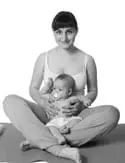 As her baby grows, a regular yoga practice will help to keep a woman strong, grounded and emotionally and mentally stable and balanced, helping her to be a better parent to her child. Yoga at this time will also help a woman with the neck, shoulder, back and postural problems that can often result from repeatedly lifting and carrying a toddler and a heavy buggy. And even if a woman only comes back to yoga many years after the birth of her child, yoga can be an extremely useful tool at this point in helping women to re-establish their own identities after years of focussing on their children, and can give them some much needed space to begin nurturing themselves again.
As her baby grows, a regular yoga practice will help to keep a woman strong, grounded and emotionally and mentally stable and balanced, helping her to be a better parent to her child. Yoga at this time will also help a woman with the neck, shoulder, back and postural problems that can often result from repeatedly lifting and carrying a toddler and a heavy buggy. And even if a woman only comes back to yoga many years after the birth of her child, yoga can be an extremely useful tool at this point in helping women to re-establish their own identities after years of focussing on their children, and can give them some much needed space to begin nurturing themselves again.
I have seen this first hand with a friend of mine who is only now finding the time to return to her yoga practice when her children are 4 ½ and 7 years old. She is finding her daily 30 minute practice of mainly restorative yoga incredibly helpful and valuable on many levels, including re-finding a sense of self, helping to calm and restore herself at the end of a busy day of being a mother and finding joy in a practice that was an important part of her life before her children were born.
Returning to a post-natal yoga class in the early months of motherhood can provide a great sense of support and community for new mums, a time to share and also time to focus on their own bodies which can get a bit neglected when there is so much focus and attention placed on babies on a day to day basis.
Yoga gives women permission to rest and reconnect with themselves, their emotions, their bodies, and their breath; it helps build strength and stamina; and it helps women to deeply relax and let go of anxieties, worries, stress and daily concerns. As such it is an extremely beneficial practice for all women post-natally.
Post-natal yoga can really help to bring the focus back to the woman and can help her to feel nurtured and cared for. Post-natal yoga classes can be a space for women to share their stories and experiences of birth in a safe environment, and to bond with other women. This is extremely important as post-natal depression often arises because women feel isolated, alone and unable to find the support they need at this time. Coming to class can help them to feel cared for, listened to and supported. All of this will mean that women in turn can better care not just for themselves but also for their babies.
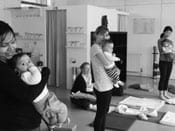 Research (¹) sadly shows that one in three women report their births as being traumatic and many more are disappointed by the birth or view it negatively. Post-natal yoga can help women to come to terms with what happened during the birth and to begin a healing process be it days, weeks, months or even years after the birth. The Birthlight approach to post-natal recovery (in which I trained) is that “it is never too late, there is always a way and it can always be repaired”, be that on a physical, emotional or psychological level.
Research (¹) sadly shows that one in three women report their births as being traumatic and many more are disappointed by the birth or view it negatively. Post-natal yoga can help women to come to terms with what happened during the birth and to begin a healing process be it days, weeks, months or even years after the birth. The Birthlight approach to post-natal recovery (in which I trained) is that “it is never too late, there is always a way and it can always be repaired”, be that on a physical, emotional or psychological level.
Even after the most wonderful, active, natural birth a woman’s body will need to heal from the pregnancy and birth and she will still be faced with all of the challenges of caring for a new born baby, so yoga is just as important after the birth as before. The immediate post-natal period can be a time of great joy and elation, but can also be one of vulnerability, exhaustion and depression. Yoga can help women to navigate all of these deep and wide-ranging feelings and emotions, whilst also enabling a woman to cope with the dramatic changes in her life and to build a strong foundation to her relationship with her new baby.
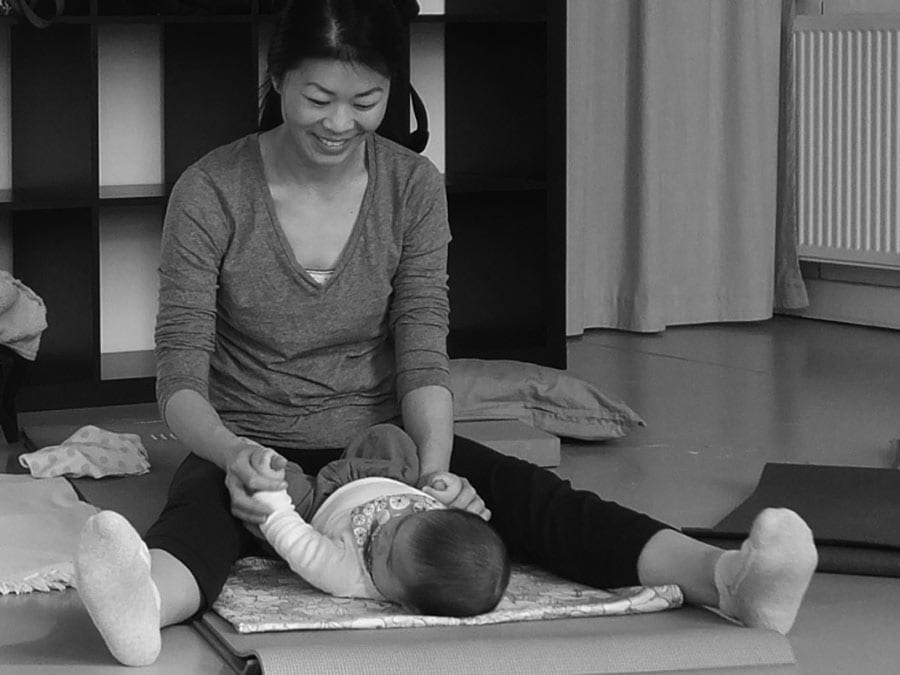
Post-natal yoga can also help:
- To heal a woman’s body after pregnancy and birth, especially her abdominal muscles and pelvic floor
- To stabilise and realign the pelvis after pregnancy
- To stay calm and focussed in the midst of all of the new challenges of caring for her baby
- To bond with her baby, and her partner in their new family unit
- To heal emotionally and psychologically after a traumatic birth or one that has not gone how the woman had wished/planned for
- To relieve other common postnatal problems including loose, aching joints, swollen ankles and lower back pain
- To relieve the physical side effects of caring for a baby including stiff necks, shoulder issues and lower back pain from carrying and feeding a baby
- To cope more skilfully with tiredness, sleep deprivation and emotional instability
- As an on-going tool throughout her life with her children, yoga can help a woman to feel more centred and grounded, stronger both physically and emotionally, healthier and better equipped to capably and skilfully deal with all of life’s challenges as a mother and a woman
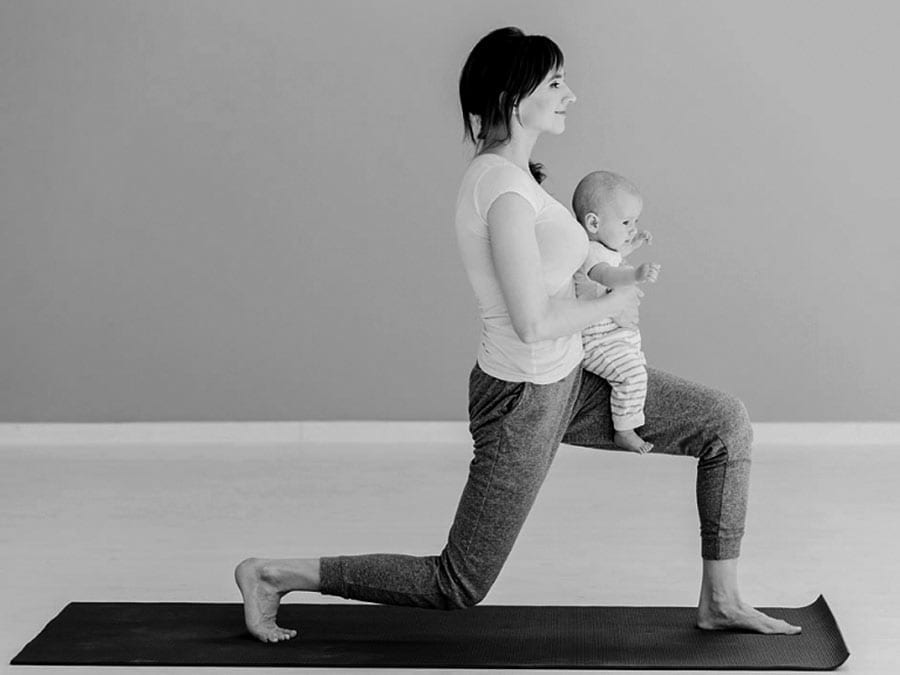
Many of the breathing techniques learned during pregnancy yoga will now help new mothers to find a sense of inner space and calm and to steady the mind, and will also be calling for the baby, who will recognise his/her mother’s breath and respond positively to it.Full yogic breathing is one of the most effective ways for new mothers to restore balance in their nervous systems after the shock that childbirth (even the shortest, easiest, most natural and active births) will cause to a woman’s body and mind. If the birth was particularly traumatic then there will be an even stronger need for women to begin healing through the use of pranayama and other yoga relaxation and gentle asana practices. Golden thread breath can be helpful as a pain-reliever if there are post-birth pains or nipple pain from breastfeeding. And the practice of post-natal breathing is essential in helping both the abdominal and pelvic floor muscles to heal.
All deep breathing will help to promote and aid deeper relaxation, better sleep and will lead to a greater release of oxytocin, helping with both breastfeeding and bonding between mother and baby.Immediately after a hospital birth, full, deep yogic breath can be very beneficial in helping a woman to fall into a much-needed deep sleep amidst all of the noise and disturbance of the hospital environment. (Full yogic breath encourages women to breath in from their abdomen, up into their rib cage and chest and then to down through their body on the exhale, feeling the abdomen, rib cage and chest fully expanding with breath on the inhalation and contracting on the exhale, with the navel and lower abdomen gently moving towards the back body at the end of the exhalation. The breath is experienced like a wave moving up the body on the inhalation and down through the body on the exhalation.)
In terms of physical healing, the most common physical difficulties after pregnancy and childbirth will include lower back pain, weak abdominal muscles, weak pelvic floor muscles and potential injuries to the perineum, all of which can make finding a comfortable sitting position quite challenging. If there was a Caesarean birth then the weakness in the abdominal muscles and pelvic floor muscles caused by the pregnancy will be exacerbated by the tenderness of the wound. Yoga can help with all of these difficulties. Gentle post-natal exercises focussing on the breath and on releasing through the pelvis can be done hours after the birth, and yoga exercises and post-natal breathing to strengthen and re-knit the pelvic floor can be done from one+ week after the birth, once the bruising has healed. Post-natal yoga exercises can also help women to relearn to walk and stretch safely, and recreate or create for the first time their core strength or hara.
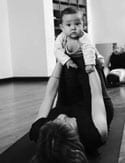 Post-natal breathing is an essential tool for women to learn and practice as part of their physical healing and can save them from years of discomfort caused by overstretched perineal muscles, preventing stress incontinence and womb prolapse. With post-natal breathing we are helping women to close the space between their abdomen and spine, and to connect to, engage and strengthen their pelvic floor muscles. Post-natal breathing also soothes the adrenal glands around the kidneys which is very beneficial as kidney energy gets much depleted during childbirth.
Post-natal breathing is an essential tool for women to learn and practice as part of their physical healing and can save them from years of discomfort caused by overstretched perineal muscles, preventing stress incontinence and womb prolapse. With post-natal breathing we are helping women to close the space between their abdomen and spine, and to connect to, engage and strengthen their pelvic floor muscles. Post-natal breathing also soothes the adrenal glands around the kidneys which is very beneficial as kidney energy gets much depleted during childbirth.
Post-natal yoga should always be simple so that women can easily incorporate it into their busy daily lives, rather than just coming to class once a week or every couple of weeks, and then not feeling able to find the time to do anything at home. Post-natal yoga with babies can be a great bonding experience between the mother and baby and in class we teach women lots of ways in which they can incorporate their babies into their postural, pranayama and relaxation practices.
In addition to yoga poses and breathing exercises, relaxation is also extremely important for new mothers. Relaxation techniques learned during pregnancy yoga can be of great benefit to women post-natally as they will enable them to access a deep state of relaxation in a short space of time, so that they can rest deeply when their babies are asleep, and can also use their own sense of calm and relaxed state to help calm and relax their babies too.
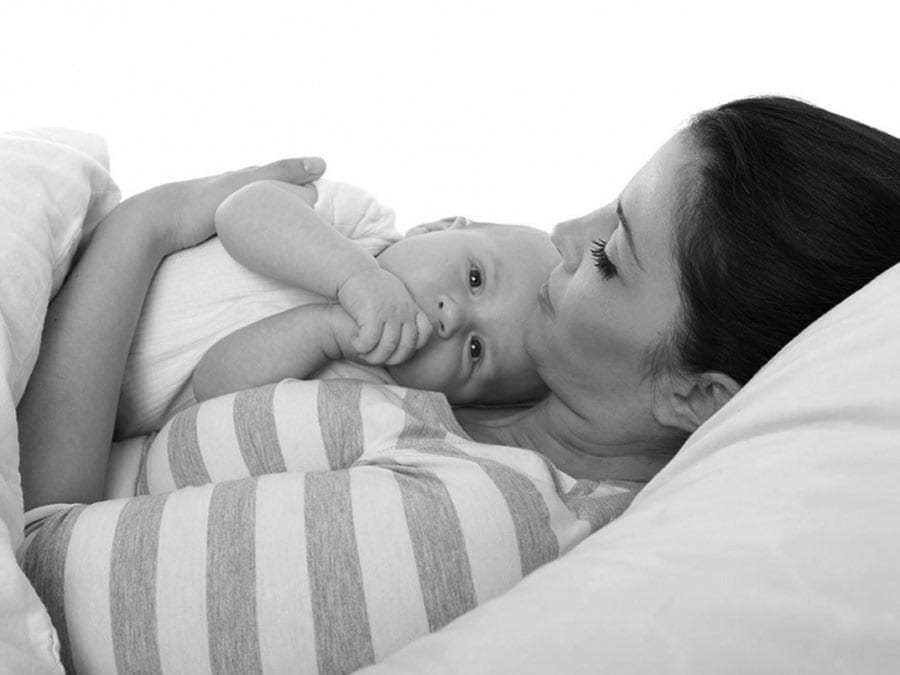
In the post-natal period, womens’ bodies will recover better from slow, small movements and stretches and deep breath work rather than strong, challenging postures. In Birthlight post-natal yoga we teach women a series of slow, subtle but nevertheless very powerful exercises that will be extremely beneficial if practiced regularly and attentively, and will help them to find ‘zero balance’ in their pelvic alignment, to close the abdomen and to re-align their spine. And we also want to help women to better cope with all of the expectations that they face not only as new mums but also as women, with society’s expectations and pressure that they will ‘snap’ straight back into shape, become a super mum and will be wearing their skinny jeans again within a week! The use of positive affirmations, meditation and sharing in a class group environment can all be very helpful with this.
So whilst it’s clear what the benefits of attending post-natal yoga classes are for new mums, what about babies?
For babies the benefits of attending Post-Natal Mum & Baby yoga classes are also numerous and include:
- The classes are an opportunity for them to begin socialising with other babies
- It allows them to bond more deeply with their mothers during the poses that involve both mums and babies

- The simple baby yoga that we do in each class has a calming effect on babies and can help them to sleep more easily
- Mothers can learn movements and relaxed holds that can help babies with their digestion and also colic. Touch and gentle movement really help to regulate a baby’s digestive system. And whilst there is no ready treatment for colic, relaxed holds and rhythmic walks can also help mums to calm their distressed babies (and also themselves) effectively.
- Babies get to participate in a joyful and uplifting practice and also to share baby yoga songs with their new little friends
- They become more confident and more at ease in the world around them
- They also begin to learn that it’s ok to be relaxed and content on their own whilst mummy spends some time focussing on her yoga practice
- The gentle stretches of the baby yoga help to open up babies’ joints, and mothers can discover how babies’ bodies move and begin to feel more confident in handling their babies
So to conclude, attending post-natal yoga classes can help women to recover from the emotional, physical and mental shock and potential trauma of birth, to feel supported and nurtured after the birth, to connect with other mothers and to share anxieties, advice and experiences, and to bond more intimately and deeply with their babies and partners.
Ultimately, the most important benefit for both mums and babies in attending yoga classes together is the sense of joy that both can share in these practices and which they can carry with them into their daily life.
